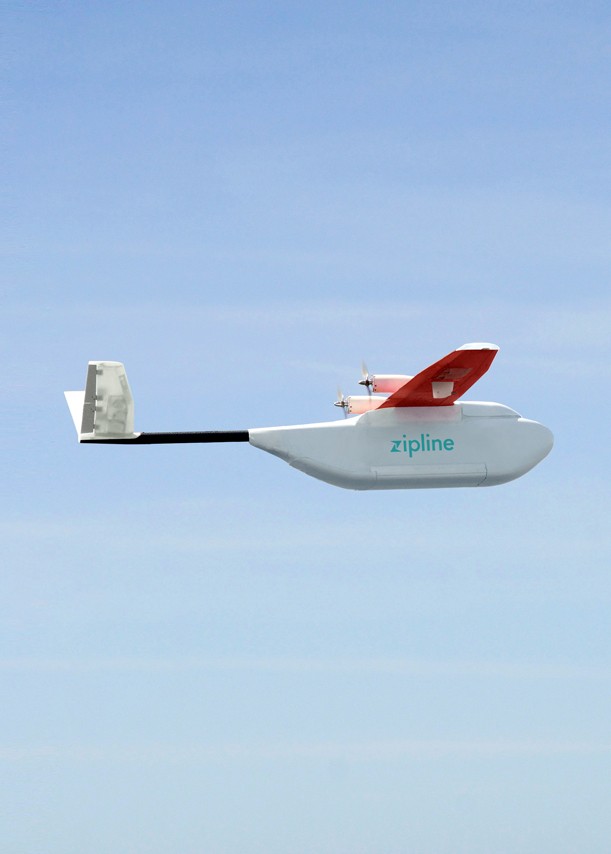In Global Shift, Poorer Countries Are Increasingly the Early Tech Adopters
Historically, industrial revolutions haven’t been kind to poor people. Despite the potential benefits technology can offer, the immediate impact on the lowest-paid members of society has often been negative. If it wasn’t putting people out of work, then technology was usually endangering them through hazardous working environments or long-term exposure to pollutants. And even today there is evidence that technology-driven economies are favoring just a small group of successful individuals, and thereby exacerbating inequality.

But now, with what the World Economic Forum (WEF) is calling the Fourth Industrial Revolution, we are seeing a different story unfold. Where steam once led to mechanization, electricity to mass production, and IT to automation, this fourth revolution is fusing technologies to achieve something new. Not only are the world’s poorest having their lives radically improved by these advances, but in some cases they are actually the first to benefit.
This marks an important and potentially powerful global shift. It can sometimes take decades before people on the bottom rung of the economic ladder can afford access to new technologies, even though they are often the ones with the most to gain. But the revolution now under way has the potential to usher in big improvements in quality of life with low-income countries as the early adopters. That means it can help close the global health gap between rich and poor.
Take the example of civilian drones. Despite much talk about gimmicky applications like drone-delivered pizza, the real potential lies in transporting medical supplies. A number of companies like Matternet are working on this in the United States but have been held back by regulations, because until last month it was illegal to fly a commercial drone without approval from the Federal Aviation Administration. However, in Rwanda the government is embracing the technology.
This week, while hosting WEF Africa in its capital city, Kigali, the Rwandan government announced a new nationwide drone delivery service. In partnership with the U.S. drone company Zipline International and partly funded by UPS and my own organization, Gavi, this service will use drones to deliver time-critical emergency medical supplies, such as blood and rabies vaccines, from the capital to Rwanda’s remotest regions. This is an elegant solution to some of the formidable and unpredictable challenges involved in reaching marginalized communities with unpredictable needs.
Technology has also played a key role in helping to locate the world’s most isolated people in the first place. While cell-phone users in New York can now use satellite-based geographic information systems (GIS) to find the nearest Starbucks, in Africa and Asia the same technology has been playing a vital role in the polio eradication effort. One of the reasons some children miss out on vaccinations is that they live quite literally off the map. If polio is to be wiped out, it is critical that every last child living in an endemic area be vaccinated. In the old days, planes were flown over such regions to help find new or previously missed communities. This was costly, inefficient, and prone to error. Instead, the Bill and Melinda Gates Foundation and the World Health Organization turned to GIS to help identify settlements in high-risk areas and plan vaccination campaigns. It has made a huge difference.
During the Ebola epidemic, a cutting-edge genetic sequencing technology was also put to use to help identify and track mutations of the virus in real time. Oxford Nanopore’s pocket-sized MinION was used in the field in Guinea to sequence the virus within 24 hours. In the future, such technology could be used to help track and understand the spread of future epidemics in the poorest corners of the world.

But by far, the technology that is likely to be most transformative in the long term is the cell phone. The growth of this technology in sub-Saharan Africa has been phenomenal. By 2007, there were more cell-phone subscriptions than people with access to sanitation. Today, there are more than 850 million subscribers across the entire continent, bringing penetration to roughly 74 percent. Phone-based technology is already helping to create digital health records, track medical supply levels, improve supply chains, and map out areas already covered by vaccination. However, since four out of five people in Africa still have no access to the Internet, there is potential to do much, much more.
To date, technology is not working for the one in five children still not receiving a full course of even the most basic vaccines, or for the 1.5 million children dying every year from vaccine-preventable diseases—roughly one every 10 seconds. We believe the Fourth Industrial Revolution can help us change that and overcome some of the challenges preventing us from reaching every child, whether in remote rural regions or in urban slums.
Seth Berkley is CEO of Gavi, an international organization dedicated to expanding access to vaccines, and was formerly with the U.S. Centers for Disease Control and Prevention and the Rockefeller Foundation. He has also been the founder, president, and CEO of the International AIDS Vaccine Initiative.
Keep Reading
Most Popular
Large language models can do jaw-dropping things. But nobody knows exactly why.
And that's a problem. Figuring it out is one of the biggest scientific puzzles of our time and a crucial step towards controlling more powerful future models.
How scientists traced a mysterious covid case back to six toilets
When wastewater surveillance turns into a hunt for a single infected individual, the ethics get tricky.
The problem with plug-in hybrids? Their drivers.
Plug-in hybrids are often sold as a transition to EVs, but new data from Europe shows we’re still underestimating the emissions they produce.
Stay connected
Get the latest updates from
MIT Technology Review
Discover special offers, top stories, upcoming events, and more.